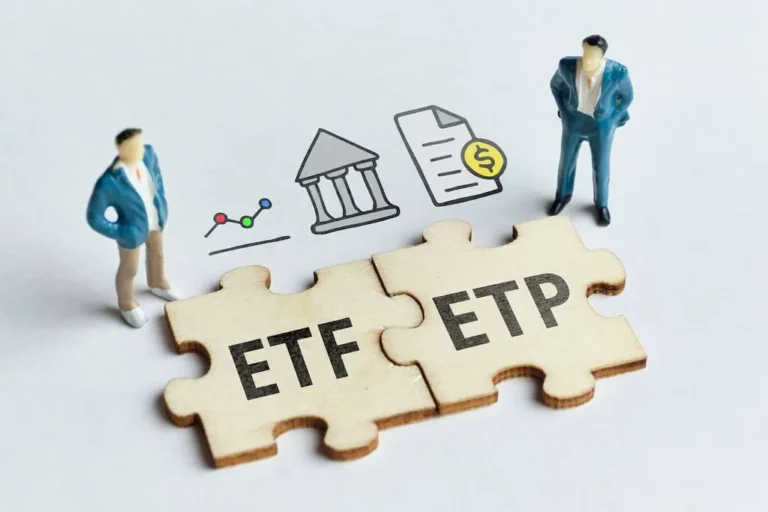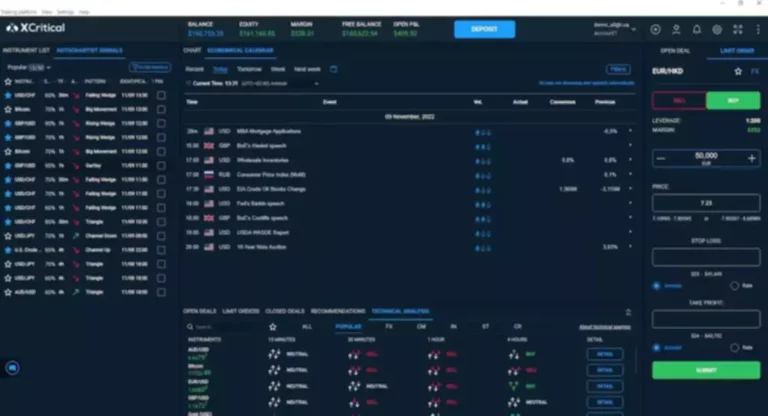Content
Know what the index being tracked by a particular ETP is measuring and the trading strategies it uses. While ETFs can include investments across many asset classes, including crypto assets through futures ETFs (bitcoin and ether), they primarily focus on stocks and bonds. Leveraged ETPs seek to magnify the returns of an underlying index or asset class using financial derivatives and Cryptocurrency debt. Inverse ETPs, on the other hand, aim to provide the opposite (inverse) performance of the underlying index. These ETPs are designed for sophisticated investors seeking to capitalize on short-term market movements, often contrasting how the ETF is naturally moving. Yep, we’re talking exchange-traded stuff again, but this one is the exchange-traded note.
Types of Exchange-Traded Products (ETPs)

ETPs can track a wide variety of indexes across many asset classes, as well as different investment or trading strategies. Some are very well-known or broad market benchmarks or indexes, such as total stock or bond market indexes. Other ETPs track indexes that are more narrowly focused, such as those made up of companies in a specific industry sector or country, corporate bonds with particular credit ratings, or individual commodities or currencies. Some of the indexes and investment strategies used by ETPs can be quite sophisticated and might not have much performance history or, in some cases, easily accessible information. Betcha some of you read the title of this article and thought, Don’t they mean ETF? The ETF is the broadest https://www.xcritical.com/ of exchange-traded products, since the funds might include individual stocks, bonds, real estate investments, money market funds—a whole variety of funds, both physically backed and not.
Investing in Short & Leveraged ETPs
The value of an ETP can decrease due to movements in the underlying assets or broader market downturns. Investors can employ various strategies when trading ETPs, etp vs etf such as buy and hold for long-term growth or tactical trading to capitalize on short-term market movements. Understanding the factors that influence ETP prices, such as changes in the underlying assets or market sentiment, is vital for making informed trading decisions. As an investor, you will find it hard to avoid mention of ETPs, which have grown enormously since their introduction in the early Nineties.
Exchange-Traded Products vs. Mutual Funds
For example, an investor who wants to gain exposure to the technology sector could invest in an ETF that tracks a technology index. This would provide the investor with exposure to a wide range of technology companies, helping to spread risk and potentially enhance returns. This includes ETCs (Exchange-Traded Commodities), ETNs (Exchange-Traded Notes), and ETFs (Exchange-Traded Funds).
Exchange-Traded Commodities (ETCs)

The most common types include Exchange-Traded Funds (ETFs), Exchange-Traded Notes (ETNs), and Commodity ETPs. Capital Com Online Investments Ltd is a limited liability company with company number B. Capital Com Online Investments Ltd is a Company registered in the Commonwealth of The Bahamas and authorised by the Securities Commission of The Bahamas with license number SIA-F245. The Company’s registered office is at #3 Bayside Executive Park, Blake Road and West Bay Street, P. O. Box CB 13012, Nassau, The Bahamas.
- This level of transparency can provide investors with a high degree of confidence in their investment decisions.
- Some are actively managed to a particular traditional, or not so traditional, investment strategy.
- Understanding the differences between these types of ETPs is crucial for investors who want to make informed decisions about their investments.
- ETNs are similar to ETFs in that they provide investors with exposure to the performance of an underlying asset or index.
- Join TIOmarkets, a top-rated forex broker, and access a world of trading opportunities.
- This enables investors to buy and sell ETF shares like the shares of any publicly traded company.
You, the investor, are loaning money to an entity that has created this ETN—often a bank—and that bank is now indebted to you and all its other ETN investors. Nothing contained in or on the Site should be construed as a solicitation of an offer to buy or offer, or recommendation, to acquire or dispose of any security, commodity, investment or to engage in any other transaction. SSGA Intermediary Business offers a number of products and services designed specifically for various categories of investors. The information provided on the Site is not intended for distribution to, or use by, any person or entity in any jurisdiction or country where such distribution or use would be contrary to law or regulation.
The opinions expressed are as of the date of production and may change as subsequent conditions vary. The information and opinions contained in this material are derived from proprietary and non-proprietary sources. Reliance upon information in this material is at the sole discretion of the reader. Most ETPs are designed to track the performance of an underlying index; however, sometimes their performance may diverge. So-called “tracking error” occurs when the returns of the ETP deviate from the returns of its underlying benchmark, which can impact investor performance (either negatively or positively).
Generally, investors in the first camp choose ETPs for a couple of reasons. On April 27 we hosted our annual ETF Industry Summit with experts from across the NYSE’s ETF community to discuss the latest topics and trends impacting the ETF marketplace. From Sectors and Smart Beta to Fixed Income, SPDR Exchange Traded Funds (ETFs) give you wide access to diverse investment opportunities.
Therefore, any accounts claiming to represent IG International on Line are unauthorized and should be considered as fake. Please ensure you understand how this product works and whether you can afford to take the high risk of losing money. Securities or other financial instruments mentioned in the material posted are not suitable for all investors. The material posted does not take into account your particular investment objectives, financial situations or needs and is not intended as a recommendation to you of any particular securities, financial instruments or strategies.
If you’re looking for a way to keep things interesting while you diversify, ETPs are one way to do that. They’re risky, because there are two ways you could lose your money—either if the index doesn’t do well or if the ENT owner (Bobby, in this case) tanks his investment and can’t pay you back. They’re a little less risky if the institution behind the ENT is credible and has a long history of making good on its promises. If you’re a savvy investor looking for ways to diversify your portfolio, you may have heard about ETPs.
Moreover, ETFs are generally more cost-effective than actively managed mutual funds and provide additional security against the insolvency of the managing company. Investors should note, however, that losses can occur within the normal market risk of the investment. An exchange-traded product (ETP) is a financial instrument traded on a regulated stock exchange. It is designed to replicate the return of an underlying benchmark or asset before fees, with the easy access and tradability of a share. Inverse and leveraged ETNs, for example, seek to deliver set positive or negative multiples of the performance of a given benchmark or index over a specified period of time, often from the close of one trading day to the next. An exchange-traded product (ETP) is a regularly priced security which trades during the day on a national stock exchange.
Sometimes, an ETP may have wide bid-ask spreads or may trade at a large premium or discount to its value, depending on a product’s trading volume and other market factors. And if an ETP is delisted from its listing exchange and limited to over-the-counter quotation, liquidity can dry up. ETPs are designed to resemble an underlying index or return of an asset, with convenient trading and access.
FLEX and LEAPS options offer investors increased flexibility in terms of contract customization (such as expiration date, exercise style, and exercise price) and time frame (with expirations of up to three years out). Equity options, which are the most common type of equity derivative, give an investor the right but not the obligation to buy or sell a call or put at a set strike price prior to the contract’s expiry date. The NYSE recently enhanced its’ trading programs to further incentivize LMMs and liquidity providers to support higher quality markets for issuers. Including new incentives to encourage participation in less active and new ETFs.

